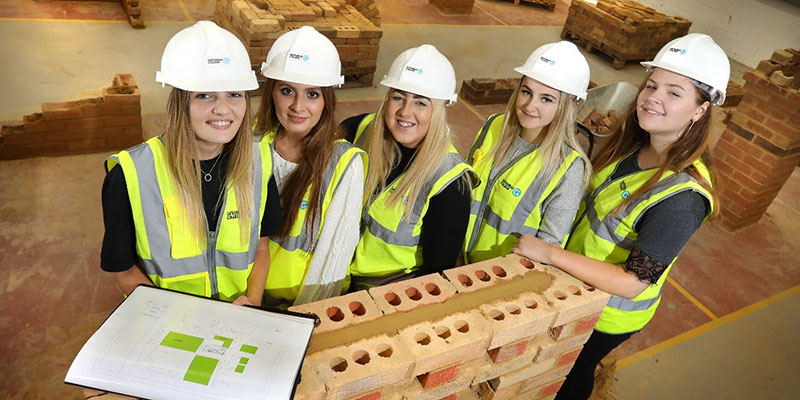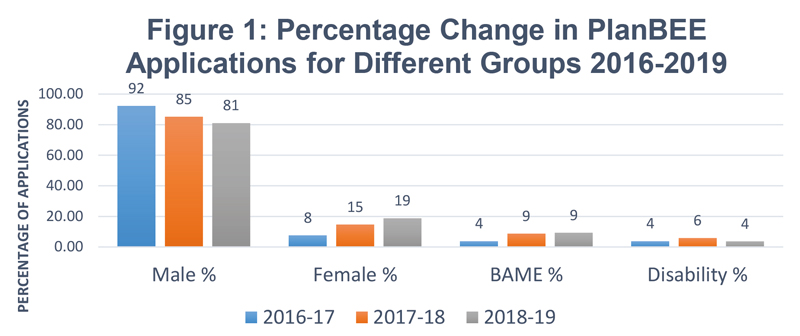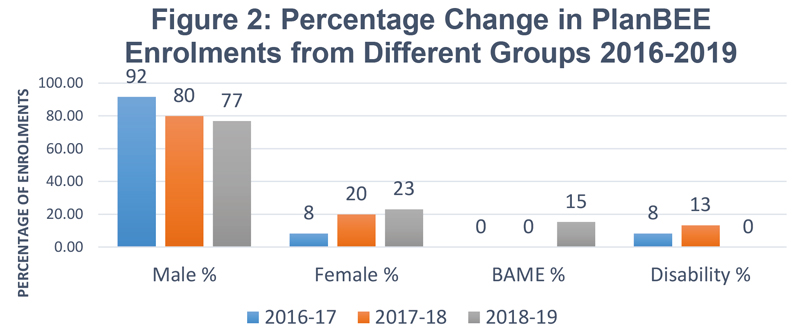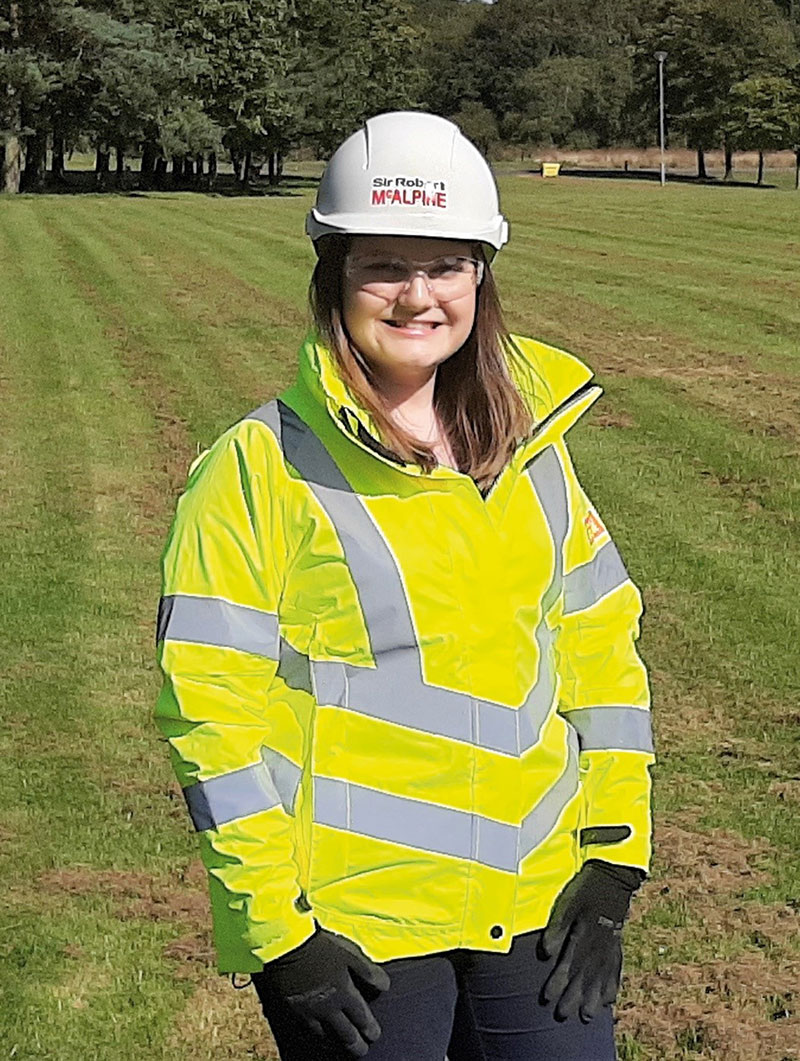Case study: BRIDGE project
Improving the diversity of students on Gateshead College's PlanBEE built environment apprenticeship programme.

PlanBEE (Plan for Built Environment Education) is an innovative higher-level apprenticeship programme designed by Gateshead College in partnership with employers.
It was developed in response to a campaign led by Ryder Architecture to drive a change in built environment education and help meet skills shortages in the industry.
Participants are employed from the outset, paid throughout and are charged no tuition fees. They rotate between different employers in the PlanBEE consortium so they can experience different roles and types of organisations.
The course was specifically designed to attract applicants from a wide range of backgrounds, including those who may not have had the financial support to study on a more traditional programme.
The challenge
The BRIDGE (Building Routes Into Degrees with Greater Equality) project investigated why the PlanBEE programme was not attracting applications from a diverse cohort of students.
The project was developed by Gateshead College in partnership with Northumbria University and Derby College.
The challenge was to implement interventions that would improve the diversity of student cohorts enrolled onto PlanBEE, and subsequently increase the diversity of the built environment workforce.
Our approach
We carried out research to understand barriers to participation, including interviews with previous applicants and students. As a result of this research, we designed and implemented a series of improvements and interventions to address the lack of diversity in future student cohorts.
The improvements included:
- changing marketing materials, information events and social media campaigns to promote and encourage a greater diversity of applicants
- changing application, interview and recruitment processes to be more inclusive
- addressing unconscious bias in interview and selection processes, including training staff and ensuring greater diversity in the composition of interview panels.
The results
Over the past three years, the PlanBEE consortium has recruited 36 young people who are all in employment and engaged in higher education study alongside their jobs.
The first cohort started in 2016 and are now in their third year of part-time study and are all still employed in the sector.
Figures 1 and 2 show the percentage change in PlanBEE applications and enrolments by group from 2016 - 2019:


Improving numbers of female applicants

As a result of changes to our marketing and recruitment strategies we have improved the proportion of female applicants from 8 per cent to 19 per cent and the proportion of female student enrolments from 8 per cent to 23 per cent.
Whilst this is only a modest improvement, the culture and dynamics within the study groups have also changed significantly, making the study environment much more welcoming for female students.
We have also been able to promote the participation and success of female students more effectively. Students have been ambassadors at our information events, and involved in International Women’s Day, Construction Week and the Great Exhibition of the North.
Improving numbers of black, Asian and minority ethnic students and disabled students
Improvements in the participation of black, Asian and minority ethnic and disabled students have been more modest.
- In 2018, 15 per cent of all students recruited and enrolled on PlanBEE were black, Asian or minority ethnic. Prior to this the programme did not have any enrolments from black, Asian or minority ethnic students.
- In 2016, 8 per cent of new students had a declared disability. This increased to 13 per cent in 2017, although no new students declared a disability in 2018.
Low participation areas
In 2016-17, 27 per cent of PlanBEE students were from POLAR4 low participation areas, which was already above the benchmark. This improved to 42 per cent in 2017-18 and 38 per cent in 2018-19.
For the academic year 2019-20, 54 per cent of our offers were to applicants from POLAR4 low participation areas.
The impact
It’s too early to confirm a correlation between these interventions and any direct impact on our providers’ overall baseline data. However, there is emerging evidence of impact from the three-year trend in enrolments onto the PlanBEE programme.
These findings indicate that where there is strategic intent from all partners at senior level and openness and recognition of unconscious bias, it is possible to make changes and see improvements in the diversity of recruitment within a short period of time.
There is also emerging evidence that higher and degree apprenticeship style courses that remove financial barriers to study are effective in increasing participation from lower socio-economic groups from POLAR4 low participation areas.
Find out more about the BRIDGE project
Download our good practice guides:
- promoting diversity and inclusion in marketing and promotional resources
- promoting diversity and inclusion in educational resources.
Find out more about PlanBEE
Watch interviews with students and employers involved with the PlanBEE programme
Case study author: Steve Logan, BRIDGE Project Lead
Describe your experience of using this website
